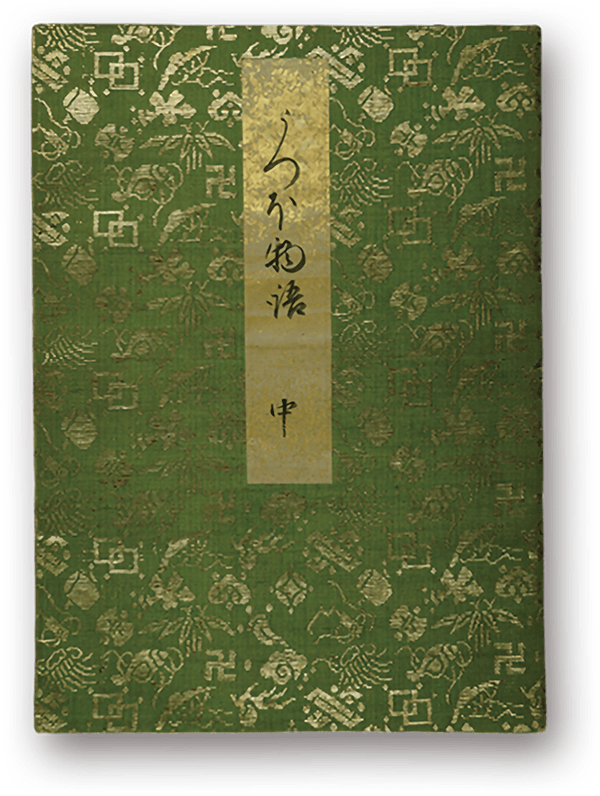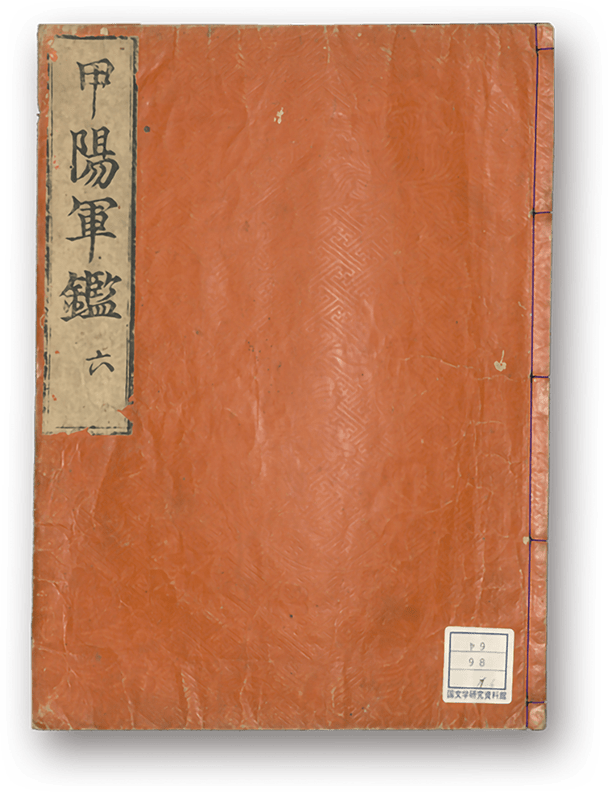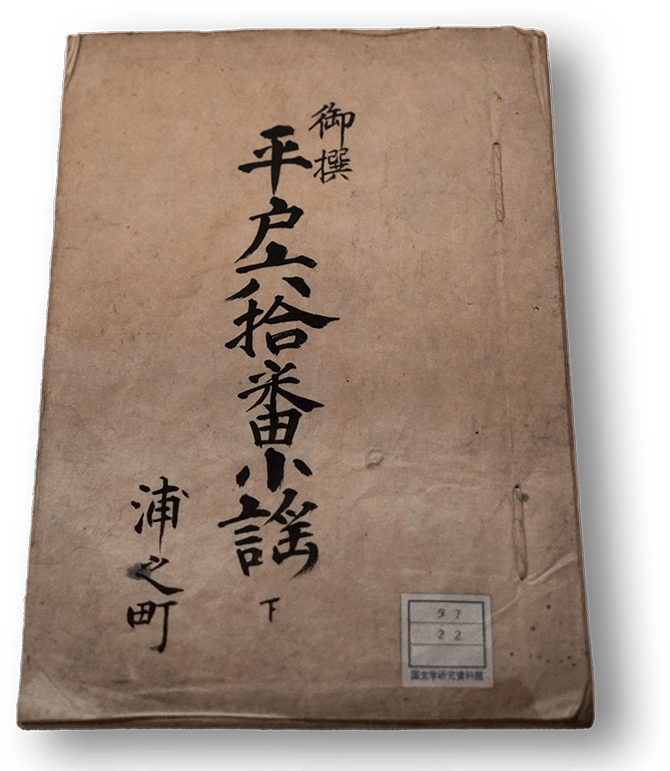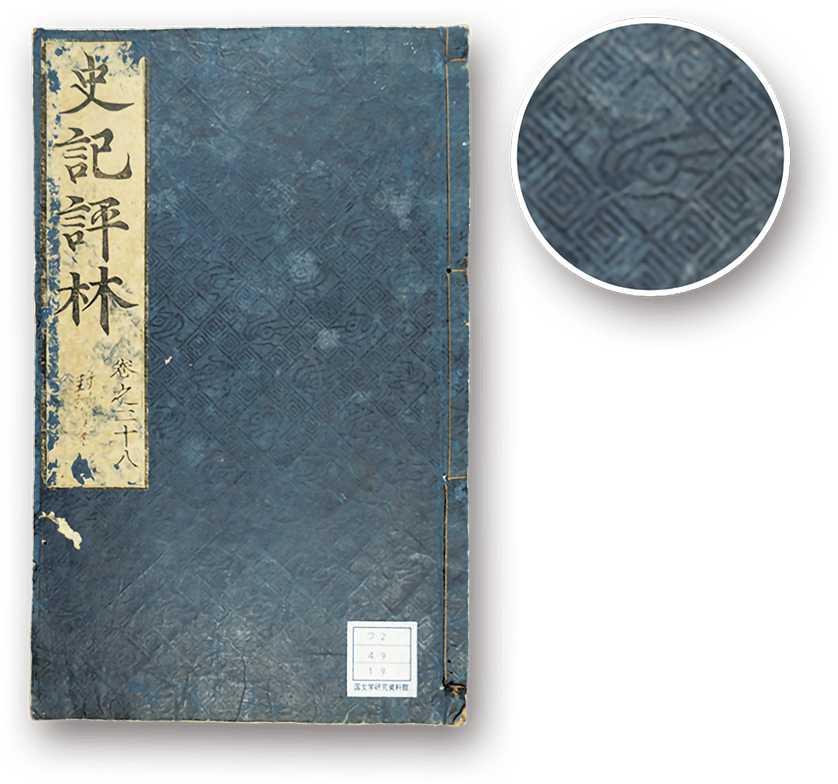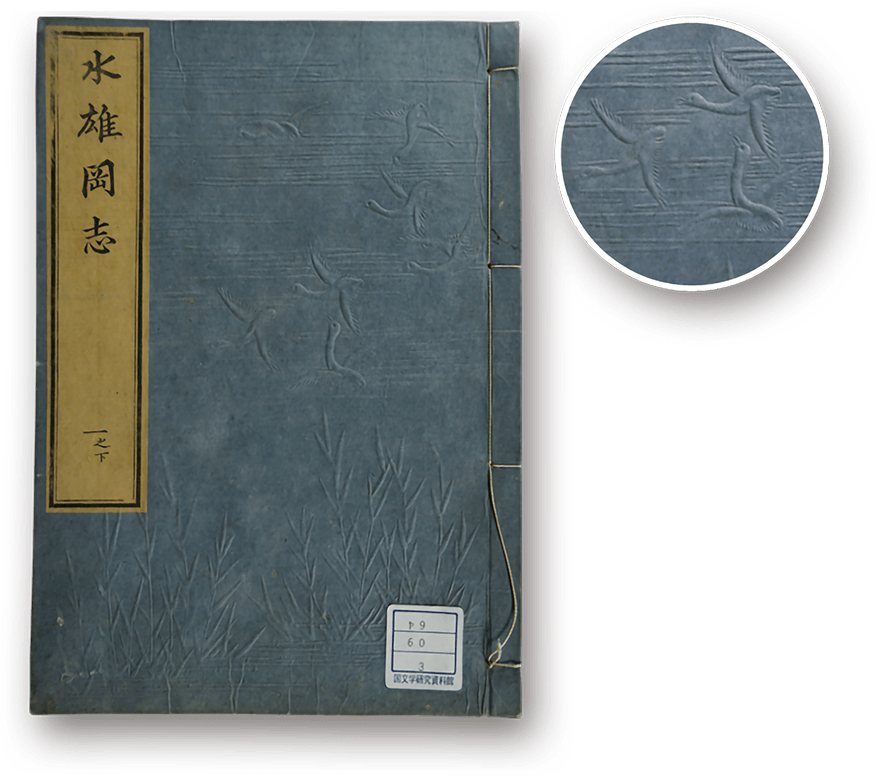Parts of a Japanese Book - 和書の部位
A Japanese book as an object consists of various parts. The following explains the name, nature and functionality of parts that physically make up a Japanese book.〈物〉としての和書は、様々な部位から成り立っています。ここでは、和書を物理的に構成する各部位の名称・性質・機能などについて解説します。
Hyōshi (Cover) - 表紙
In a Japanese book, a cover is a part that is outside the body and wraps it. As a cover attracts readers' attention, it is often elaborately decorated.和書において、本体部分の外側にあってそれを覆う部分が表紙です。表紙は目につきやすいため、装飾に意が用いられることも少なくありません。
Hyōshi (Cover) - 表紙
Tanbyōshi - 丹表紙
A tan or bright vermilion cover, particularly a glossy tan-colored cover often found in the beginning of the Edo period. It is thought that tanbyōshi was regarded as more deluxe cover than the following kurikawairo-byōshi.丹色(明るい朱)の表紙のことであるが、特に江戸初期に例の多い光沢のある丹色の表紙を指す。
Hyōshi (Cover) - 表紙

Shōzoku no Ki - 装束之記
Shibubiki-byōshi - 渋引き表紙
A cover using paper on which persimmon tannin is applied with a brush. It has a lighter color since the color is not applied many times as in the case of kurikawairo-byōshi. The color may be applied to the whole surface, or some simple patterns may be drawn on it. Primarily used for manuscript books but also for printed books after middle of the Edo period.刷毛で柿渋を引いた紙を用いた表紙。栗皮色表紙のように塗り重ねず、比較的淡い色。表紙の全面に塗ったり、単純な文様を描くこともある。主に写本に用いられた。
Hyōshi (Cover) - 表紙
Tsuyadashi-mon'yō - 艶出し文様
A cover made by sticking indigo, vermilion, black or other colored paper on a cover, putting the cover on a woodblock on which patterns are carved, and rubbing the convex parts of the patterns from the surface to make it glossy.
Many examples exist after begginning of the Edo period.藍・朱・黒などに染めた紙を張った表紙を文様を彫った木型の上に置き、表面から文様の凸部分をこすって艶を出したもの。
Hyōshi (Cover) - 表紙
Karaoshi-mon'yō - 空押し文様
A cover made by sticking indigo, vermilion, black or other colored paper on a cover and putting a pattern-carved woodblock on it from its back to cause the patterns to appear supposed to be increased its number after middle of the Edo period.藍・朱・黒などに染めた紙を張った表紙に裏から文様を彫った木型を押し付け、文様を浮き出させたもの。
Others - 他の部位
Others - 他の部位
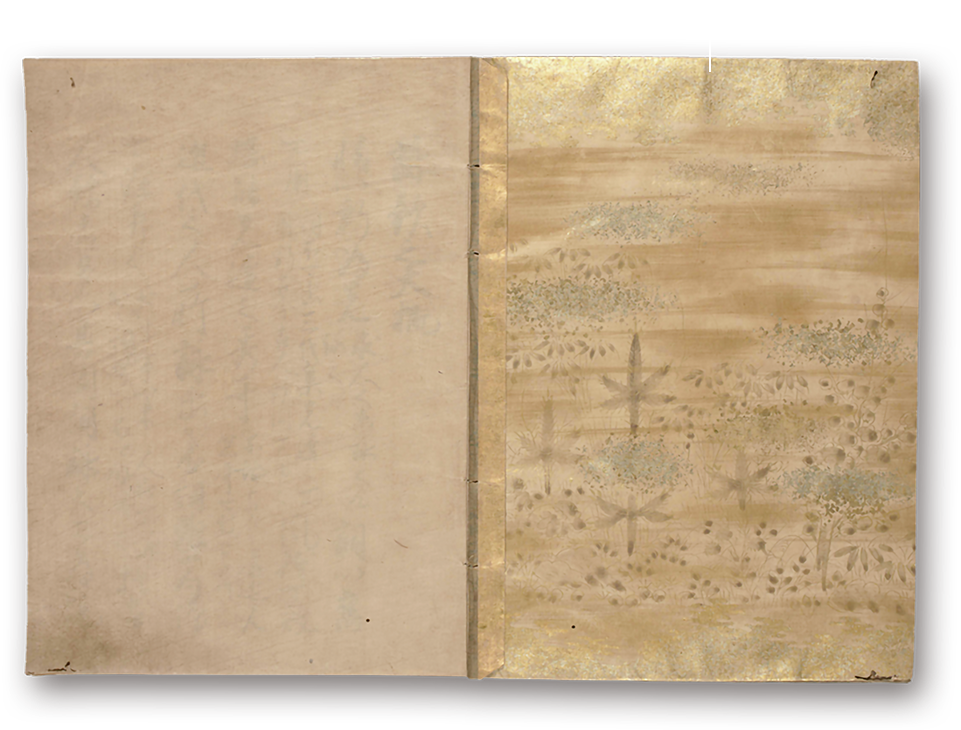
Sanbu Shō - 三部抄
Mikaeshi (Inside Cover) - 見返し
The other side of a cover. The other side of the front cover is called mae- mikaeshi or front inside cover, and that of the back cover ato-mikaeshi or back inside cover. Some manuscript books have a decoration on it.表紙の裏側のことで、表表紙の裏側を前見返し、裏表紙の裏側を後見返しと言います。写本では、ここに装飾が施される場合もあります。
Others - 他の部位

Niwa no Oshie (Abutsu no Fumi) - 庭のをしへ(阿仏の文)
Tobira (Title Page) - 扉
The title page is a single independent leaf on which the book title is shown at the beginning of the body of a sasshibon book. Something other than the title may also be shown.冊子本で、本体部分の初めに独立に一丁を取り、書名を記したものが扉です。書名以外の記載を伴うこともあります。
Others - 他の部位

Sanbu Shō - 三部抄
Asobigami (Flyleaf) - 遊紙
A flyleaf is one or two white leaves with nothing written or printed on them at the front or back of the body of a sasshibon book. Recchoso books may often have several or more flyleaves at their back.冊子本の前や後に、何も記載しない白紙の丁を一~二丁程度添えたものを遊紙と言います。ただし列帖装の本の後ろの遊紙は、しばしば数丁以上になることがあります。
Others - 他の部位

Nenbutsu - ねんぶつ
Jikutsuke-gami - 軸付紙
In some kansubon books, when the edge of their body paper does not have an adequate margin, a piece of paper may be pasted on it so that a stick can be attached there. Such a piece of paper is called jikutsuke-gami.巻子本において、本紙の端に十分な余白がない場合など、軸を付けるための紙を貼り継ぐことがあり、軸付紙と言います。
Others - 他の部位
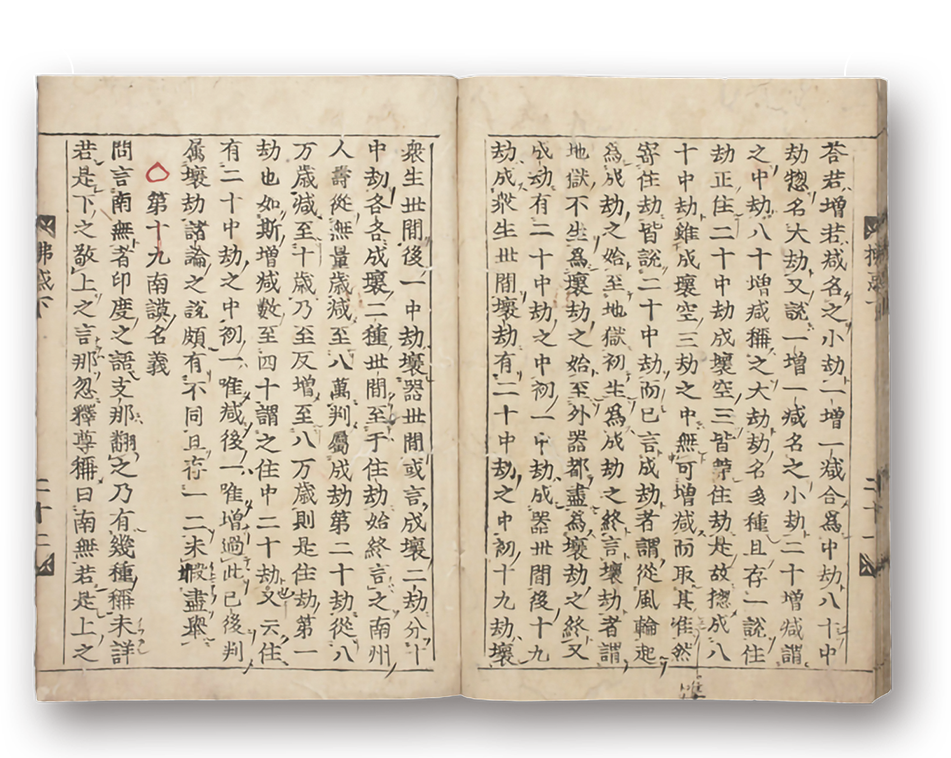
Futsuwakushū Chūsaku - 払惑袖中策
Hanshin - 版心
The center of han or a printing plate for a single leaf of printed sasshibon books. Also known as hashira or a pillar because it often has vertical lines on its sides. For a fukurotoji book, hanshin is the fold of a leaf.冊子本の版本において、一丁分の版の中央部分のことで、両側に縦線が引かれていることが多いので、その形状から柱とも呼ばれます。袋綴本では、版心が丁の折り目になります。
Others - 他の部位

Futsuwakushū Chūsaku - 払惑袖中策
Nodo - 咽
The margins at both sides of the center line when a sasshibon book is wide open.冊子本を見開きにした時の、中央線の両側の余白部分のことです。
Others - 他の部位
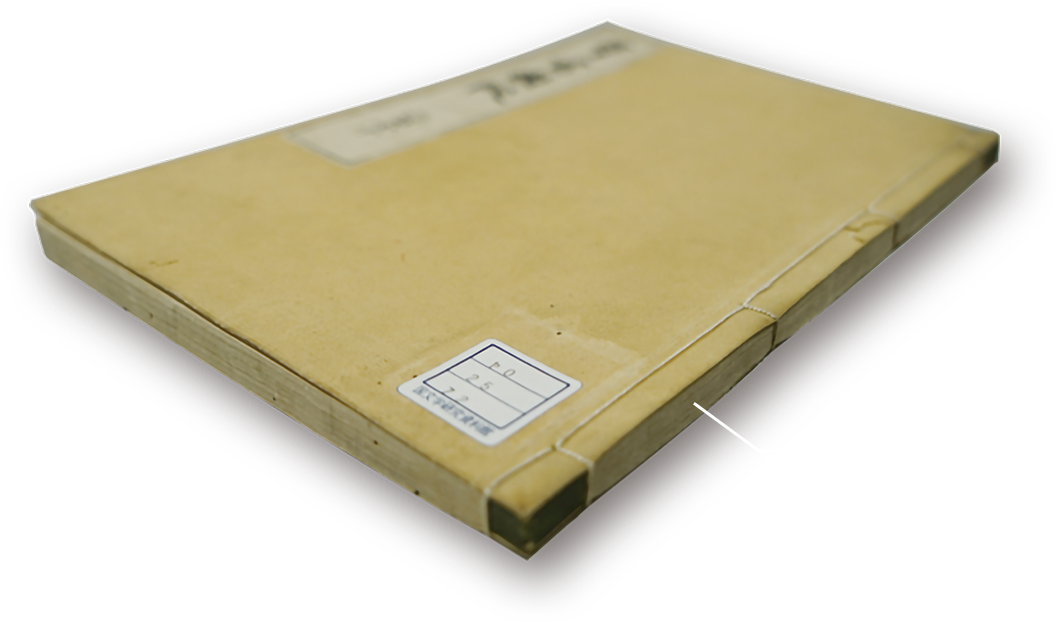
Gunsho Ruijū - 群書類従
Se (Spine) - 背
The opposite side of the front side in a sasshiobon book. Books other than gajoso are sewed up at or near the spine.冊子本で、手前と反対側の部分です。画帖装以外は、背かそれに近い所で綴じられています。
Others - 他の部位
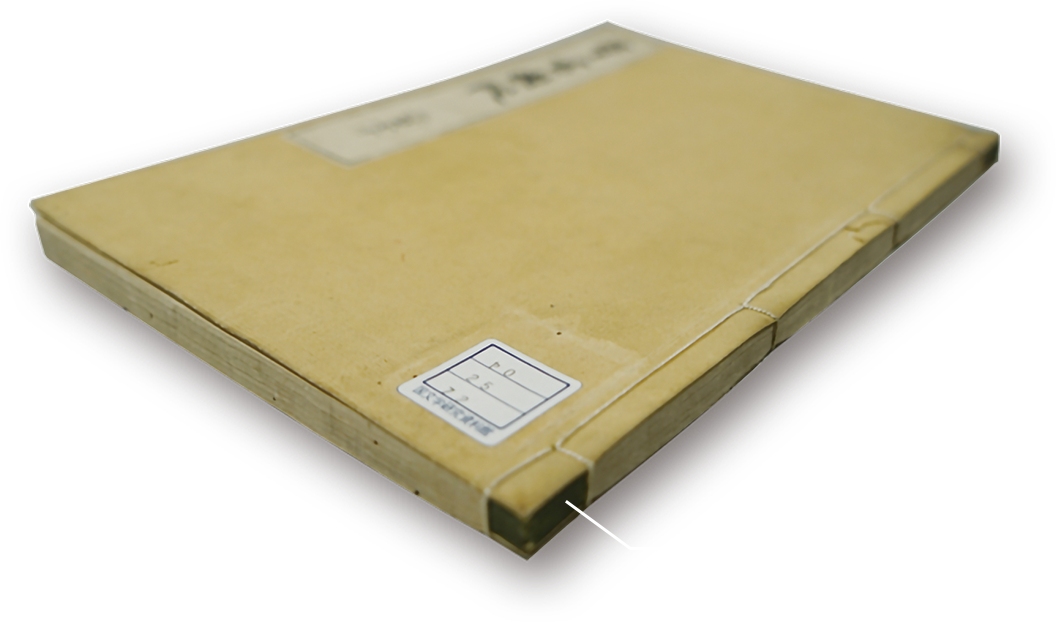
Gunsho Ruijū - 群書類従
Kadozutsumi - 角包み
A small piece of cloth attached before the cover is fit so that it wraps the upper and lower corners of the sewing margin, primarily for fukurotoji sasshibon. Used since the late Edo period.主に袋綴の冊子本で、表紙を付ける前に綴じ代部分の上下の角を包むように貼られた、小さい布片のことです。江戸後期頃以降に見られます。

